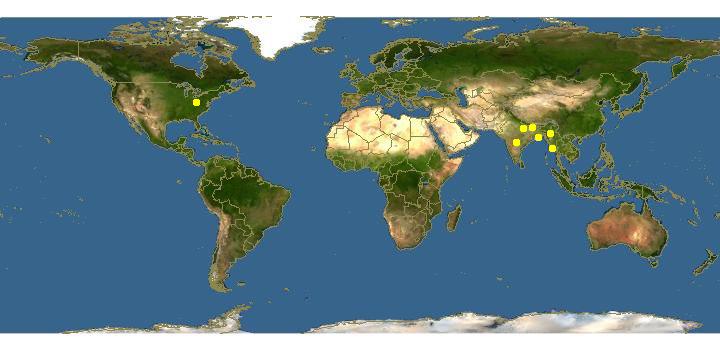Cuchia
Vitamin D3 (100 ng 100 g body weight-l day-l) was administered
intraperitoneally (ip) to the freshwater mud eel Amphipnous cuchia kept
in artificial freshwater, calcium-free freshwater, low-calcium
freshwater (0.2 mmol/l CaCl2) or calcium-rich freshwater (13.4 mmol/l
CaCl2) for 15 days. Analyses of serum calcium and phosphate levels were
performed on days 1, 3, 5, 10 and 15 after the beginning of the
experiment (six eels from each group at each interval). Administration
of vitamin D3 elevated the serum calcium [maximum elevation occurred at
day 10 in artificial freshwater (vehicle: 10.55 ± 0.298, vitamin D:
13.90 ± 0.324), low-calcium freshwater (vehicle: 11.17 ± 0.220, vitamin
D: 12.98 ± 0.297) and calcium-rich freshwater (vehicle: 11.24 ± 0.373,
vitamin D: 14.24 ± 0.208) whereas it occurred at day 5 (vehicle: 8.42 ±
0.253, vitamin D: 11.07 ± 0.328) in calcium-free freshwater] and
phosphate levels [maximum elevation at day 15 in artificial freshwater
(vehicle: 4.39 ± 0.105, vitamin D: 5.37 ± 0.121), calcium-free
freshwater (vehicle: 4.25 ± 0.193, vitamin D: 5.12 ± 0.181), low-calcium
freshwater (vehicle: 3.93 ± 0.199, vitamin D: 5.28 ± 0.164) and
calcium-rich freshwater (vehicle: 3.77 ± 0.125, vitamin D: 5.46 ±
0.151)] of the fish maintained in the above mentioned environmental
media, but the responses were more pronounced in the fish kept in
calcium-rich media








No comments:
Post a Comment